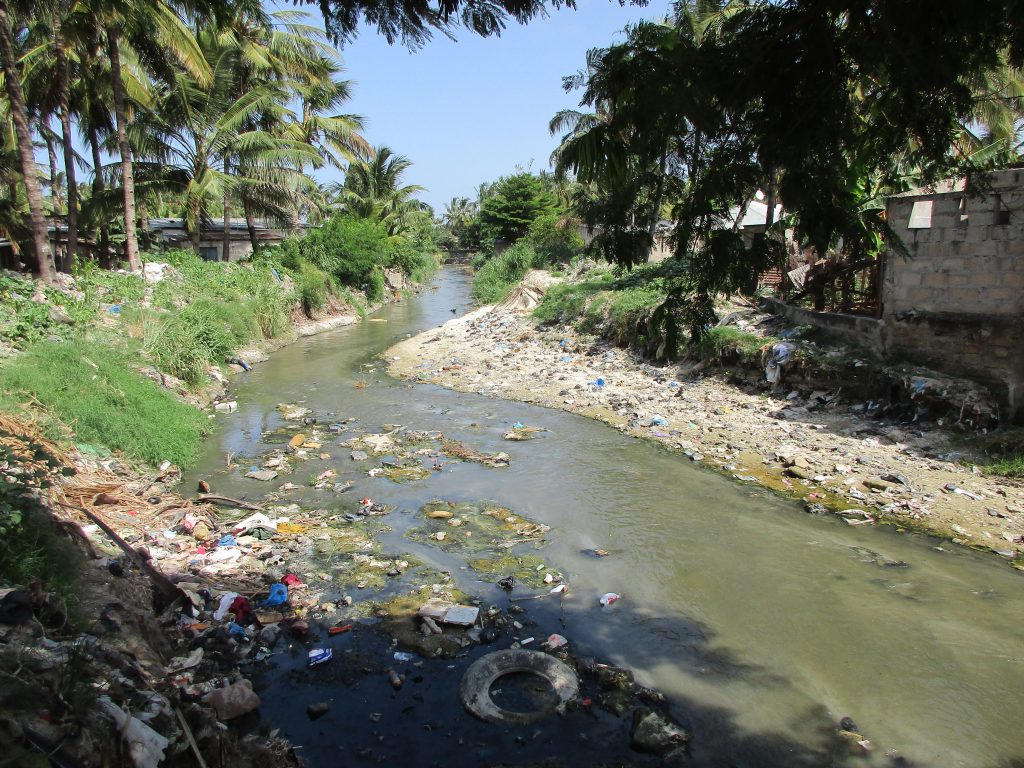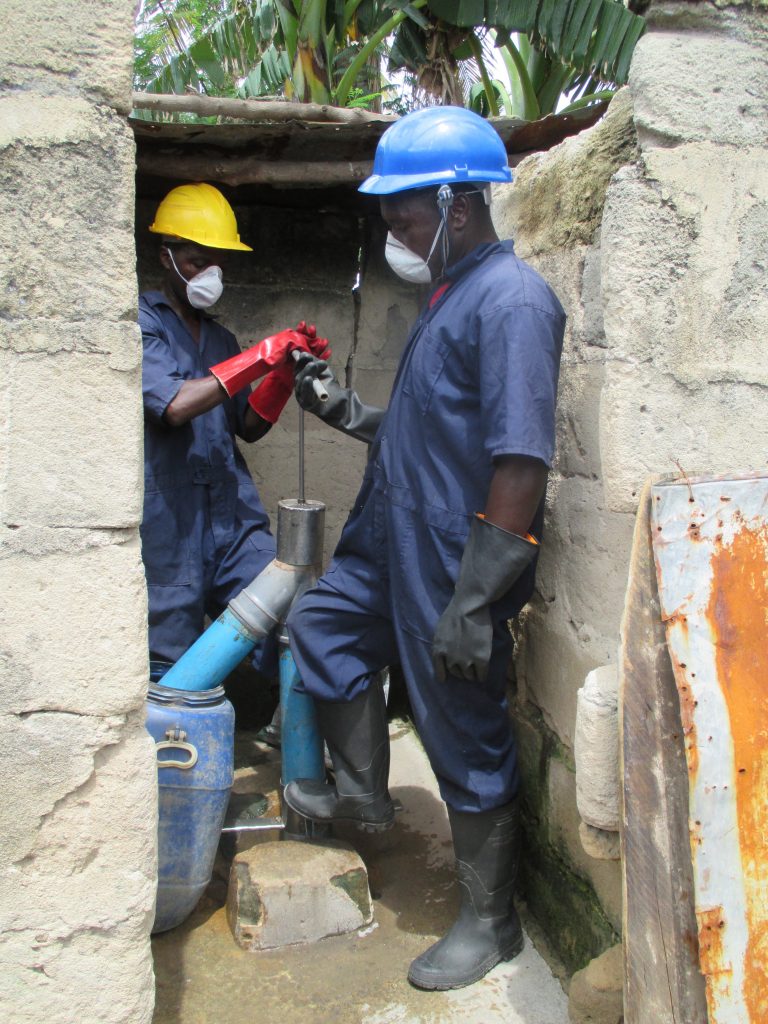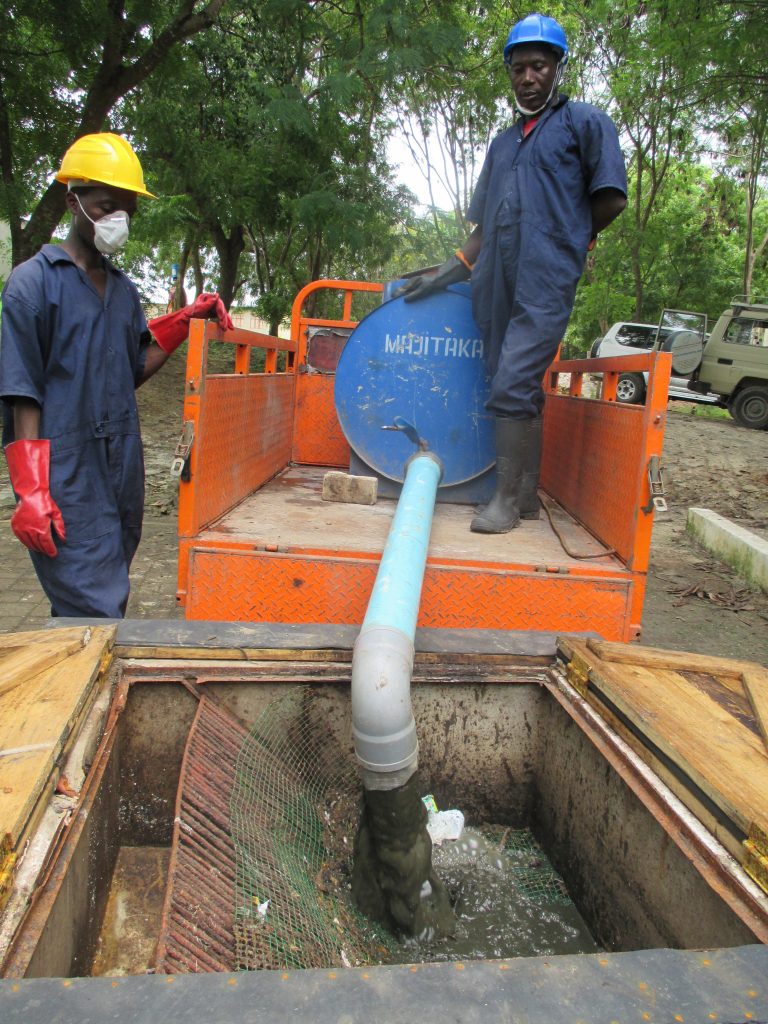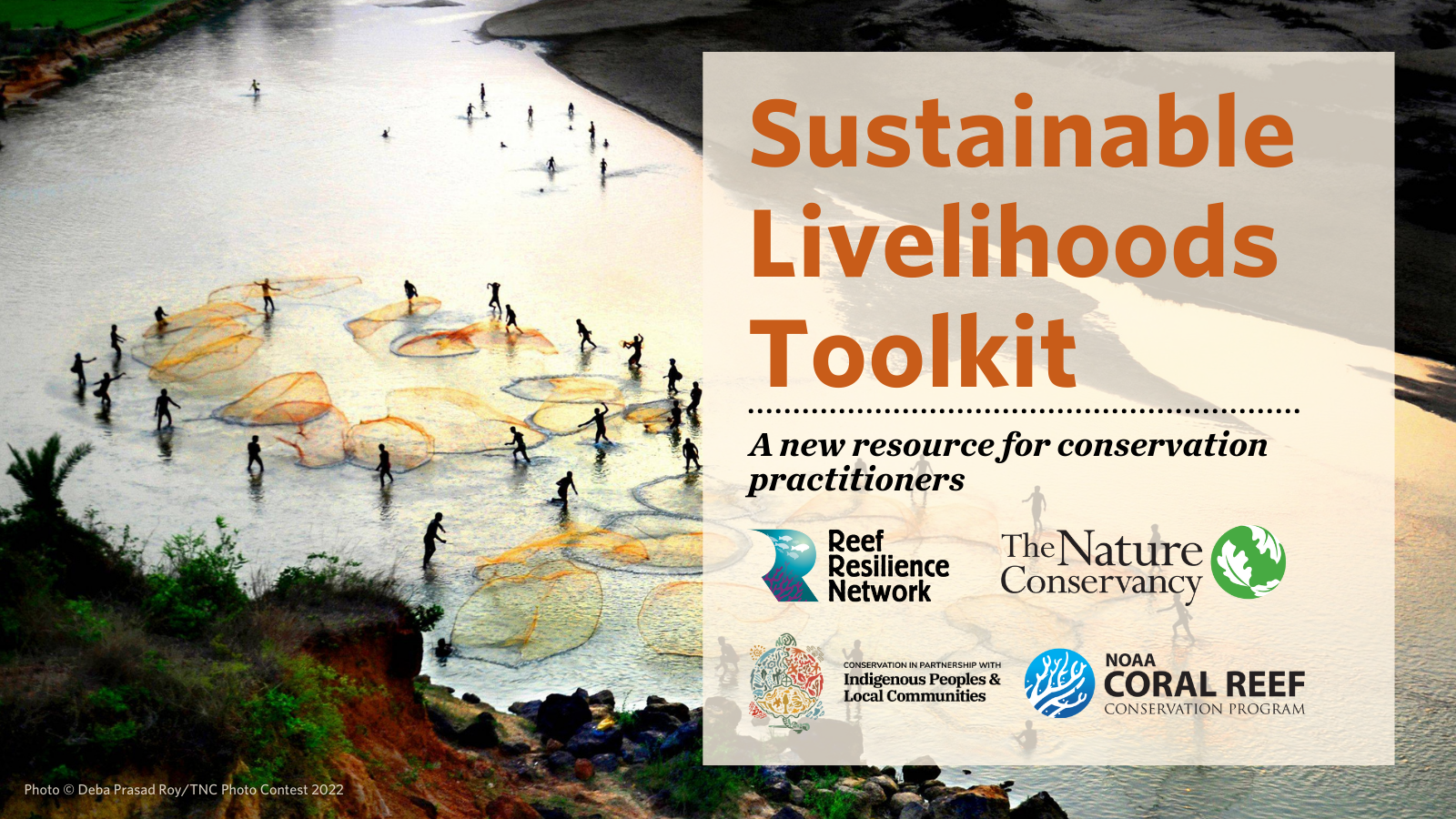Reducing Environmental Pollution Using Decentralized Sanitation Solutions for On-Site Latrines in Dar Es Salaam, Tanzania
Location
Dar es Salaam, Tanzania, East Africa
The challenge
In Dar es Salaam only 10% of the population is connected to the sewer network. The majority of the population use on-site systems, with 20% of total households using on-site septic tanks and the remaining 70% using on-site pit latrines. Inadequate sanitation is an underlying cause behind the extended cholera outbreak that resulted in over 10,000 reported cases and a mortality rate of 1.6 % between 2015 and 2017. About 90% of Dar es Salaam residents need to pay for pit or septic tank emptying services. Current pit emptying services are either expensive vacuum tankers or unsafe self-emptying practices. Even if vacuum tankers are used sludge is frequently illegally dumped into water bodies or fields, due to the limited number of sludge treatment sites. One common unsafe practice is to ‘vomit’ the contents of the pit latrine into the environment, where they flow into surface and ground water. It is estimated that nearly 60% of the on-site systems are using the ‘vomiting’ method of emptying.

A typical stream in Dar es Salaam contaminated with fecal sludge and solid waste. Photo © Jacqueline Thomas
There is large quantity of fecal pollution entering the Southwest Indian Ocean off Dar es Salaam, via the main streams and rivers that flow through the city. Currently, there is limited data on microbial and pathogen loads associated with this pollution. Surrounding Dar es Salaam, there are a number of coral reef ecosystems that are important marine habitats for both fishing and eco-tourism. More work is needed to implement sanitation solutions that both protect the health of the local population and the coast ecosystems.
Actions taken

Emptying a pit-latrine in Dar es Salaam using a Gulpher hand pump. Photo © Jacqueline Thomas
The project titled Decentralised Sanitation Systems for Dar Salaam (‘DEWATS for Dar’) was initiated to address the lack of safe sanitation services for on-site systems in Dar es Salaam. The sanitation intervention selected for implementation was an up-scale of a proven latrine emptying and sludge treatment/transfer service using a social entrepreneurship model. ‘DEWATS For Dar’ uses locally manufactured latrine emptying tools, simple transportation and a decentralized sludge treatment site. The sludge treatment system was designed by the NGO Bremen Overseas Research & Development Association (BORDA). The plant design is based on biological treatment using anaerobic digestion and additional treatment stages to produce safe effluent. The treatment plant uses no electricity or other additional resources to function (water or chemicals). The DEWATS outputs are biogas for cooking, dried sludge bio-solids and treated effluent for agriculture.
Two new plants were built to serve two urban subwards of Dar es Salaam. Each plant serviced approximately 3,000 households, with a population range from 18,000-30,000 people per system. The clients for the collection service were both informal and formal settlements. More affordable emptying costs were achieved by using locally appropriate and adapted emptying technologies including Gulper hand pumps and small vacuum systems on three-wheeled motorcycles. There were income-based negotiated service fees whereby wealthier clients cross-subsidized services for poorer clients. The total cost of treatment was reduced by lowering transport costs by having a shorter distance to the DEWATS/transfer station to the households and through sales of the bio-solids.

Loading the faecal sludge into the Decentralised Wastewater Treatment Plant in Dar es Salam. Photo © Jacqueline Thomas
‘DEWATS for Dar’ outputs were measured in terms of the quality of treatment outputs (effluent and biosolids), human health improvements, reductions in environmental pollution and economic benefits (employment) in the communities in which they were built. The project commenced in 2016 and concluded in 2020 with a handover of the operation of the plants to local municipality operators. By providing an emptying service and treatment facility for fecal sludge the overall community and environmental health could be improved, as it can reduce the instances of unsafe emptying into the streets and contamination of water bodies (streams and rivers). However, this was dependent on the rate of acceptance and up-take of the treatment services, which varied over the implementation period.
How successful has it been?
The project was successful in building and operating the two new treatment facilities. The plants were shown to significantly reduce the microbial and pathogen loads of the raw fecal sludge. Given the reduced timeframes for the operation stages, it was difficult to measure any improvements in the human health or environmental health. This is due to the scale of use. Over time as more households use the services of the treatment system, it is anticipated there will be measurable improvements in human health and a reduction of pollution loads in the rivers running through those communities. The project raised awareness regarding sanitation treatment solutions. By handing over the facility to the local municipality, treatment systems can continue to be operated.
Lessons learned and recommendations
- The initial stages of consultation with stakeholders took a significantly longer time than originally planned. This is because there was a policy void with respect to approvals processes needed to build such a treatment plant on public land.
- The longer consultation stage meant that the full operation of both plants was only for 1 year before the conclusion of the project. It was very difficult to measure any outcomes of the plants’ operations in such a short space of time.
- The project management was exceptionally complex and took a lot more time, skill and energy than the implementing NGO had anticipated.
- The workforce to run the plants was employed on a salary rather than being incentivized to work based on the number of clients serviced. This lead to poor offering of services and inconsistency in fees charged. This was a significant point that deterred more members of the community from using the emptying service.
- The handover to the local municipality was complete, however, there were some concerns if they would continue to run the plant optimally.
Funding summary
The funding body was the UK Department for International Development (DFID) and grant implementation was through the Human Development Innovation Fund (HDIF).
Lead organizations
Implementing Lead Organization: Bremen Overseas Development Association (BORDA)
Evaluation Organization: Ifakara Health Institute (IHI)
Partners
See above
Resources
DEWATS for Dar Project Website


